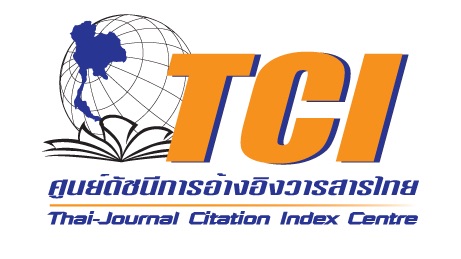ภูมิปัญญาลือเชียมของกลุ่มชาติพันธุ์ออสโตรเอเชียติก ในราชอาณาจักรไทยและราชอาณาจักรกัมพูชา
Keywords:
Local wisdom, Lur – CheamAbstract
การวิจัยเรื่องภูมิปัญญาลือเชียมของกลุ่มชาติพันธุ์ออสโตรเอเชียติกในราชอาณาจักรไทยและราชอาณาจักรกัมพูชา การศึกษาในครั้งนี้มีวัตถุประสงค์ 1) เพื่อศึกษาภูมิปัญญาลือเชียมของกลุ่มชาติพันธุ์ออสโตรเอเชียติกในราชอาณาจักรไทย และราชอาณาจักรกัมพูชา 2) เพื่อศึกษารายกรณี ณ ราชอาณาจักรกัมพูชา 3) เพื่อวิเคราะห์องค์ประกอบภูมิปัญญาการส่งเสริมและป้องกันลือเชียมของกลุ่มชาติพันธุ์ออสโตรเอเชียติกในราชอาณาจักรไทย และ 4) เพื่อจัดทำข้อเสนอเชิงนโยบายและเพื่อถอดรหัสภูมิปัญญาลือเชียมของกลุ่มชาติพันธุ์ออสโตรเอเชียติก ในราชอาณาจักรไทย และราชอาณาจักรกัมพูชา วิธีการวิจัยเป็นการวิจัยเชิงคุณภาพ (Qualitative Research) ด้วยการศึกษาแนวชาติพันธุ์วรรณนา ผสานกับการวิจัยเชิงปริมาณซึ่งใช้เทคนิคการวิเคราะห์องค์ประกอบ (Exploratory Factor Analysis) และการวิเคราะห์การถดถอยพหุคูณแบบขั้นตอน (Stepwise Multiple Regression Analysis) เพื่อเป็นการพยากรณ์องค์ประกอบภูมิปัญญาหมอพื้นบ้านเกี่ยวกับลือเชียมของกลุ่มชาติพันธุ์ออสโตรเอเชียติกในประเทศไทย และกัมพูชา ผลการศึกษาพบว่า บริบทสังคมวัฒนธรรมที่เกี่ยวข้องกับภูมิปัญญาลือเชียมของกลุ่มชาติพันธุ์ออสโตรเอเชียติก ในราชอาณาจักรไทยและราชอาณาจักรกัมพูชา ยังคงมีแบบแผนการดูแลตนเองตามหลักพุทธวิธี 7 เพื่อให้สอดคล้องกับวิถีการดำเนินชีวิตในปัจจุบันที่สืบทอดกันมาตั้งแต่บรรพบุรุษ ได้นำมาปรับใช้เพื่อความสุขสบายทั้งกายและใจ อันเชื่อมโยงกับหลักสัปปายะ การวิเคราะห์องค์ประกอบภูมิปัญญาลือเชียมของกลุ่มชาติพันธุ์ออสโตรเอเชียติกในราชอาณาจักรไทย มีจำนวน 5 องค์ประกอบ ดังนี้ องค์ประกอบที่ 1 “วัด” เป็นแหล่งสัปปายะ มีพระครูหมอให้ภูมิรู้เรื่องอาหาร 4 สมุฏฐาน 4 มหาภูตรูป 4 และมีการปฏิบัติตามแบบแผน 7 พุทธวิธี รักษาผู้ป่วยทุกโรคและเพื่อเทคนิค “ไล่ลม” องค์ประกอบที่ 2 “สมาธิ” ช่วยให้ผู้ป่วยบูรณาการภูมิปัญญาชาติพันธุ์กับพุทธศาสนาอย่างลงตัว และใช้ภาษาถิ่นเพื่อการอนุรักษ์นิเวศวิทยาเภสัชวัสดุ องค์ประกอบที่ 3 การแก้ไขไสยศาสตร์ด้วยพุทธวิธีและผนวกด้วยกิจกรรม 5 อ. ช่วยส่งเสริมผู้ป่วยมีจิตตั้งมั่น หันมารักษาโรคลือเชียมแบบพึ่งตนเอง องค์ประกอบที่ 4 “วัยชรา” ต้องเปลี่ยนวิถีชีวิตด้วยอาหารสูตรสำเร็จตามวัฒนธรรมลุ่มน้ำโขง และเรียนรู้เทคนิคการเคี้ยวบดอาหารคำข้าว เตโชธาตุเพื่อการย่อย และวาโยธาตุเพื่อการไล่ลม องค์ประกอบที่ 5 ปฏิบัติการตามข้อห้าม (ตอม) และศีล 5 รวมทั้งเรียนรู้ ภูมิปัญญาการแพทย์พื้นบ้านที่สัมพันธ์กับวาโย อาโป เตโชมหาภูตรูป เพื่อการบรรเทาโรคลือเชียมและหลังคลอด ข้อเสนอเชิงนโยบายภูมิปัญญาลือเชียมของกลุ่มชาติพันธุ์ออสโตรเอเชียติก ในราชอาณาจักรไทย ซึ่งพัฒนาขึ้นมาจากองค์ประกอบภูมิปัญญาลือเชียมของกลุ่มชาติพันธุ์ออสโตรเอเชียติกในราชอาณาจักรไทย ทั้ง 5 องค์ประกอบที่กล่าวมาข้างต้น ประกอบด้วย 5 นโยบาย ดังนี้ นโยบายที่ 1 การสนับสนุนให้วัดเป็นแหล่งเรียนรู้และมีการปฏิบัติ เพื่อรักษาผู้ป่วยทุกโรค นโยบายที่ 2 การส่งเสริมให้ผู้ป่วยใช้สมาธิ ในการผสมผสานภูมิปัญญาชาติพันธุ์กับพระพุทธศานา ในการอนุรักษ์เภสัชวัสดุ นโยบายที่ 3 การส่งเสริมให้ผู้ป่วยรักษาสุขภาพโดยการพึ่งตนเอง ตามแบบแผนพุทธวิธีและกิจกรรม 5 อ. นโยบายที่ 4 วิถีการรับประทานอาหารตามหลักเตโชธาตุและวาโยธาตุ ของผู้สูงอายุลุ่มน้ำโขง นโยบายที่ 5 การป้องกันโรคความดันโลหิตสูง
The research of Lur – Cheam local wisdom in the Austro-Asiatic Ethnic Group in The Kingdom of Thailand and The kingdom of Cambodia. The objectives of this research are. To study Lur – Cheam local wisdom in the Austro-Asiatic Ethnic Group in The Kingdom of Thailand and the Kingdom of Cambodia. 2. To study in the case studies in The Kingdom of Cambodia. 3. To analyze the elements of Lur – Cheam local wisdom for promoting and preventing an Austro-Asiatic Ethnic Group in The Kingdom of Thailand And 4. To propose the policies for and to decrypt Lur – Cheam local wisdom in the Austro-Asiatic Ethnic Groups in The Kingdom of Thailand and Cambodia. This research was the Qualitative Research for study the ethnography with a quantitative research method by using Exploratory Factor Analysis and Stepwise Multiple Regression Analysis to predict the elements of folk healer wisdom of Lur – Cheam local wisdom in the Austro-Asiatic Ethnic Group in The Kingdom of Thailand and the Kingdom of Cambodia. The results are: The context of cultural society related to Lur – Cheam wisdom of the Austro-Asiatic Ethnic Group in The Kingdom of Thailand and Cambodia are still the pattern of the self care according to 7 methods of Buddhism principles in order to conform with the way of life in the present day which they inherited from ancestors and applied with Sapaya principles to create physical and mental happiness. The analyzation of Lur – Cheam wisdom of the Austro-Asiatic Ethnic Group in the Kingdom of Thailand were 5 Elements as: The first Element is “Temple”, a source of advantageous conditions and provost conducted as a caregiver to give knowledge of “food 4”,origination ,the four primary elements and 7 Buddhist Methods for treating the patients and for“ chasing wind techniques”. The second element is "Concentration", it could help patients to integrate an ethnic wisdom and Buddhism thought perfectly and used local dialects to conserve the material pharmaceutical ecology. The third element is “Rectifying” the superstition by using a Buddhist Method and combined with 5 activities to help a people who had a mental concentration to treat Lur – Cheam disease with self-reliance. The fourth element is "The elderly ", to change the way of life for food recipes on the culture of the Khong river and learning the rice chewing techniques for better digestion and for carminative. The fifth elements is to act under the prohibition (toms) and 5 precepts and learning the local wisdom related to the air element , liquid element and heating element of primary elements in order to relieve symptoms of Lur – Cheam disease and postpartum. The proposal of policy of Lur – Cheam wisdom of an Austro-Asiatic Ethnic Group in the Kingdom of Thailand which developed from 5 Elements in the Austro-Asiatic Ethnic Group in the Kingdom of Thailand. As mentioned above to 5 policies as : The firsrt policy is to support the temple as the learning place and practition place for giving curative care to all patients. The second policy is to enhance the patients to meditate for integrating the ethnic wisdom with Buddhism to preserve the material pharmacy. The third policy is to promote the patients to take care their health by using Buddhism Methods and 5 items activities such as ( food, exercise, emotion, no smoking and no alcohol). The fourth policy is to consume a food with Techo That and Wayo Principals in the elder living of Khong river culture. The fifth policy is to prevent Hypertension Disease.
References
กระทรวงสาธารณสุข. (2554). เฝ้าระวังพฤติกรรมสุขภาพ. [(ออนไลน์]. เข้าถึงได้จากhttp://www.hed.go.th/frontend/theme/content.php?Submit=Clear&ID_Info=0 0020134. html สืบค้น 10 สิงหาคม 2555.
กระแส ชนะวงศ์.2557,มิถุนายน 26
จีระศักดิ์ เจริญพันธ์ และเฉลิมพล ตันสกุล. (2549). พฤติกรรมสุขภาพ. พิมพ์ครั้งที่ 5. มหาสารคาม : คณะสาธารณสุขศาสตร์ มหาวิทยาลัยมหาสารคาม.
อัจฉรา ภาณุรัตน์ และคณะ. (2555). พระ-หมอ-ครู : กลไกทางวัฒนธรรมเพื่อสันติภาพตามแนว ชายแดนไทยกัมพูชา. รายงานวิจัยฉบับสมบูรณ์. สุรินทร์ : มหาวิทยาลัยราชภัฏสุรินทร์.
อัจฉรา ภาณุรัตน์. (2556). ภูมิปัญญาและชาติพันธุ์วรรณนา. พิมพ์ครั้งที่ 2. สุรินทร์ : สำนักพิมพ์ มหาวิทยาลัยราชภัฎสุรินทร์.
Dickinson, Heather O. and others. “Lifestyle interventions to reduce raised blood ressure : a systematic review of randomized controlled trials,” Journal of Hypertension. February 24(2), 2006. February 8, 2007.
Mishra, Vinod and others. “WP25 : Epidemiology of Obesity and Hypertension Uzbekistan,” Demographic and Health Surveys. 542-A, 2005. May 28, 2006. World Health Organization. 2005:1-2
Downloads
Published
How to Cite
Issue
Section
License

This work is licensed under a Creative Commons Attribution-NonCommercial-NoDerivatives 4.0 International License.







